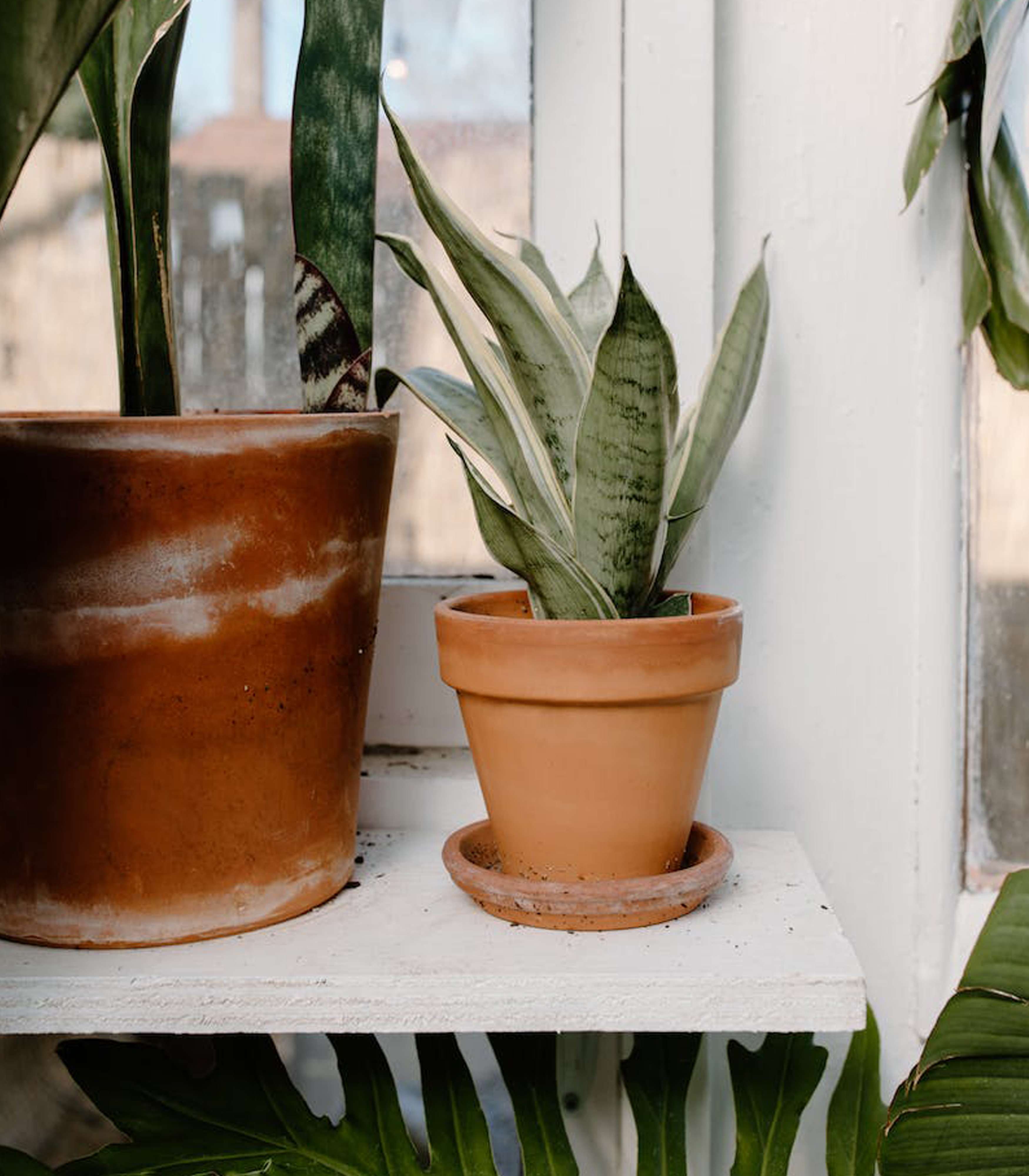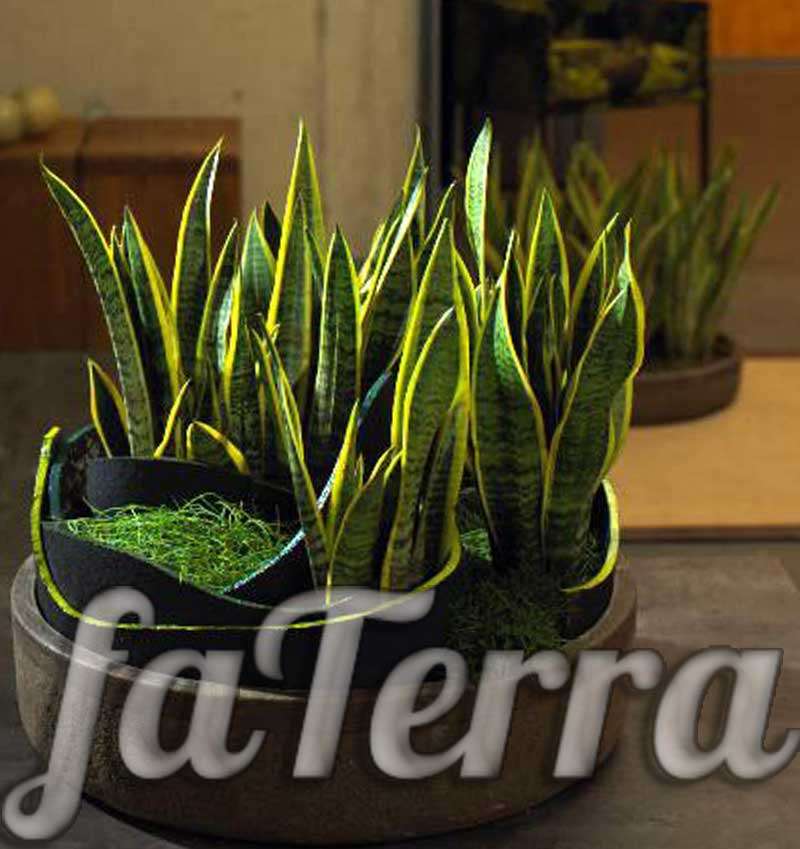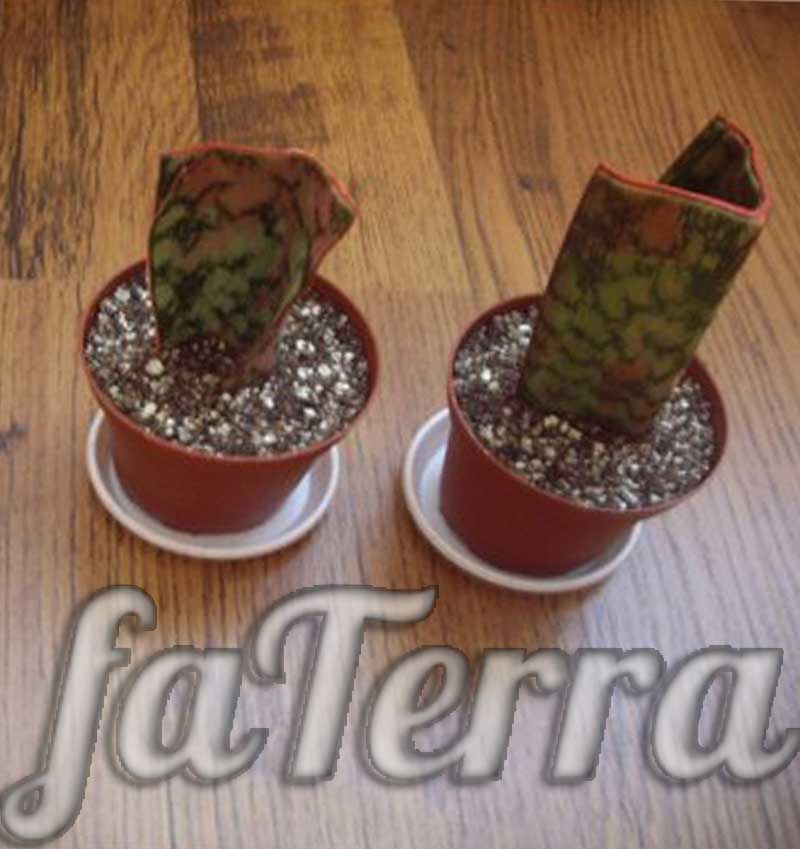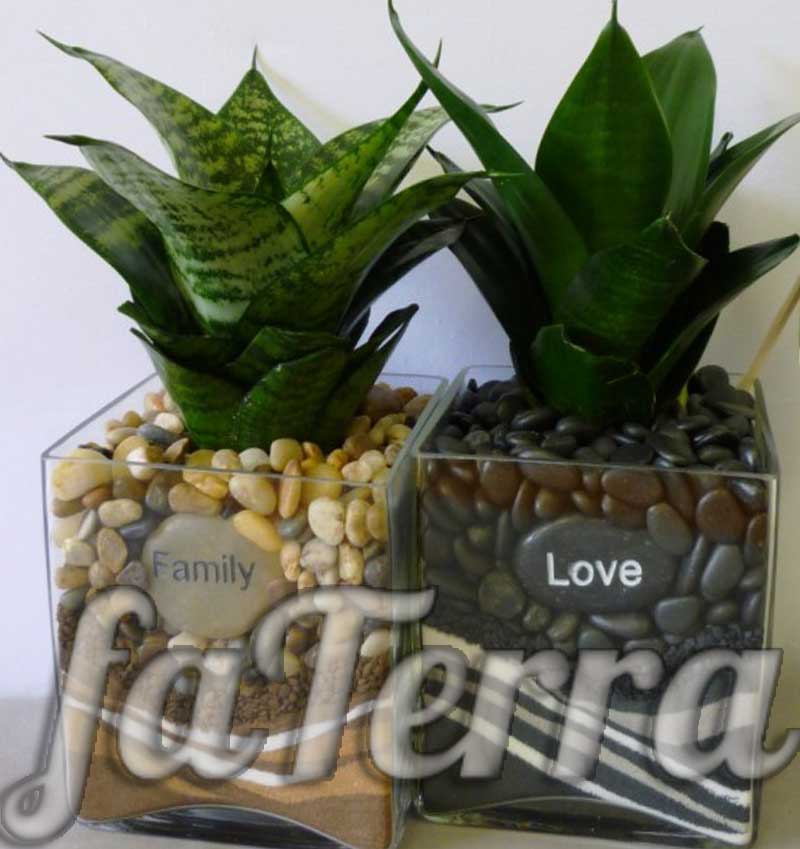Latin name: sansevieria
Family: asparagus
Origin: African tropics
Brief information about the unpretentious sansevieria
If you want to decorate your home with beautiful representatives of green flora, but you have never been able to save the indoor flower presented to you, and you simply consider yourself an incapable person for floriculture, do not rush to get upset! The ideal option for you is sansevieria or sansevier - it cannot be killed.
The people say it is the mother-in-law's tongue flower or the pike tail flower. It is a perennial evergreen plant with long, erect leaves. This is the first houseplant in the ranking for unpretentiousness. Maybe you will speak out against her, saying: “After all, she is ugly!” Our answer to this is that beauty is a relative concept, and if you put the plant in the right place and in a proper pot, then you will not stop admiring it. After all, designers who are engaged in decorating rooms are very fond of this flower, even more than that, it takes first place among all indoor flowers.
For example, the plant looks original if several sansevieria are planted in a row in one long pot. Often a flower is used in compositions, placing more delicate flowers against the background of its thick leaves. An adult sansevieria can make a great addition to your window sill, as its striped, dense, glossy leaves can compete in beauty and decorativeness with other well-known plants.
The snag of sansevieria is that it is too common and unpretentious, because for many of us it is boring to grow plants that almost everyone has and does not require any effort at all. But if you want to decorate a dark room (for example, a corridor), then you will not have any options other than sansevieria.
It may be surprising for someone, but sansevieria blooms! Most often in spring and summer. The flowers of the plant are ugly, but they emit a strong aroma that can be compared with cloves, only much sharper. The flowers open in the evening and close again in the morning.
Sansevieria species
In nature, there are more than 50 types of sansevieria, but only about 10 are found in home floriculture. The most common of them are described below.
Three-lane Sansevieria (Sansevieria trifasciata Prain)
She has a thick creeping root. From this root grow light green hard leaves with darkish horizontal stripes. It is common in room culture. Sensevieria flowers are white-green in three stripes, small, collected in a brush, 4 centimeters long, emit a pleasant aroma.
Cylindrical Sansevieria (Sansevieria cylindrica)
It has leathery, cylindrical, dark green leaves with a yellow border and silvery stripes that are located across. A groove is located along the entire length of the leaf. Towards the top, the leaves narrow and form a sharp end. The flowers are white, with a reddish tint above, collected in a panicle.
Sansevieria Hanni (Sansevieria Hahnii)
The difference between this species and the previous ones is short stature, the maximum height of the plant is 30 cm. The leaves are also small, dark green in color, with tips bent outwards. The leaves have a very beautiful pattern, they all form a rosette resembling a vase. This variety is artificially bred and named after its creator Khan. The most common sign of this flower is that if you have it in your apartment, then the situation will be calm, as it absorbs all the negativity.
Liberian Sansevieria (Sansevieria liberica)
Lanceolate leaves, reaching up to 50 cm in length, are flat, dark green with blurry light green stripes located across. This species forms a rosette of 6 leaves parallel to the soil. The flowers are white, from which comes a sharp aroma.
Sansevieria hyacinth (Sansevieria hyacinthoides)
Like all types of sansevieria, this plant is a perennial. It has 4 leaves collected in a rosette, up to 45 cm high. The leaves are dark green, lanceolate with light green stripes across. The edges of the leaves are whitish or brown. The flowers are small, with a pleasant aroma. Blooms in winter.
Sansevieria home care
As already mentioned, sansevieria is completely unpretentious. With all the desire it is difficult to kill her. If you want to see your pet cheerful, provide him with suitable conditions. Sansevieria perfectly protects the room from harmful substances that constantly emit objects around us (furniture). Another flower capable of this is chlorophytum. So, sansevieria home care.
Location selection
Sansevieria is not threatened by the direct rays of the sun, but what is there, they are even preferable for her. She loves bright light very much and will be able to survive even on a scorching south window, but it is better to slightly shade her during the heat itself. The best option is the southeast and southwest window sill. In bright light, sansevieria produces beautiful, variegated leaves. Of course, the most intensely colored varieties need sufficient light. In bright light, it will bloom profusely.
Sansevieria will feel good in deep darkness, this is the uniqueness of this plant. It can be placed even in the depths of the northern room. However, under such conditions, the leaves will fade and the growth of the plant will stop. If you use this flower to decorate a room, then at least sometimes put it on a sunny windowsill. Once a month, sansevieria is enough to form a new leaf.
Sansevieria will easily tolerate dry climates. The ideal temperature for it is not lower than 16 ° C and not higher than 25 ° C. It can withstand even 5 ° C, while it is better not to water it.
Watering
Sansevieria does not need too frequent watering. On the contrary, only one complication can be brought to the plant - it is too abundant watering. In this case, the root system may even rot. If this happens, then just remove the flower from the pot and try to protect unaffected areas from rotting, treat them with charcoal. If everything is too bad, then try to root at least part of the leaf.
In summer, sansevieria is watered once a week, and even less often in rainy or cloudy weather. In winter - once a month, during this period of the year, when watering, it is better not to fall on the outlet, in order to avoid rotting of the roots.
Priming
It grows well in a mixture of: leafy soil (1 part), soddy soil (1 part), coarse sand (2 parts). Drainage must be a third of the pot, no less.
Top dressing
Feed sansevieria not often, in the summer about once every 4 weeks with fertilizer for succulents and cacti. Fertilizing too much and often is not necessary, because an overabundance of top dressing can lead to a loss of leaf elasticity. In winter, the plant does not need to be fertilized.
Sansevieria transplant
Sansevieria is transplanted every 3 years, when the roots come out of the pot. It does well in a cramped pot, so only the top soil can be changed.
Sansevieria is planted in a shallow dish, but wide, because the plant has superficial roots, and a wide pot will allow them to grow in breadth. When transplanting, it is better to use earthenware, as there are times when the roots of sansevieria simply "tear" plastic pots. Sometimes adults, large flowers have to be tied to a support because of its heavy and powerful leaves, as the plant can simply fall out.
Sansevieria reproduction
You can propagate sansevieria by dividing the rhizome, side shoots, leaf cuttings or seeds.
Most often they use the first method when transplanting. Just cut the root system and treat it with charcoal, then plant it in different dishes. You can propagate by separating the children, this is suitable for rosette varieties of sansevieria.
It is absolutely not difficult to propagate by a leaf or its separate part. Just put it in wet sand and wait for rooting. The peculiarity of this method lies in the fact that species of sansevieria with a light stripe along the edge with such reproduction most often produce green-leaved simple flowers. If you want to get children with a stripe, then cut the sheet obliquely, then place the part where the stripe is in the sand.
Sometimes, when sansevieria fades, an interesting shoot appears on the soil - this is how seed reproduction takes place. Gather the seeds, then sow them into the soil. Seedlings will appear in the second week.
Diseases and pests
A dangerous pest of sansevieria is a mealybug. In the affected plant, the leaves may be bent and a white coating may appear. If you see light dots, then these are thrips.
Problems that may arise
When caring for sansevieria, you are unlikely to have great difficulties. The most likely problem is overwatering. As a result, the leaves will be sluggish, yellow, and the root system will begin to rot. Approximately the same problems will cause water in the center of the outlet.
If your sansevieria has dark spots, poor lighting may be the cause, and brownish spots may be a fungal infection.
If you keep the plant in cold conditions, the leaves may wilt and rot. Just move the sansevieria to a warm place and cut off the injured leaves.
Toxicity
Sansevieria will perfectly clean the air from formaldehyde and xylene. But you should still not put it in the nursery, since the plant has very sharp tips of the leaves and it is very easy to get hurt about them. And you can also say that sansevieria is poisonous when ingested. But who will chew its hard leaves?
Mother-in-law's flower language signs and superstitions
- Many say that with the advent of the house of sansevieria, peace appears in life, insults and quarrels are forgotten, everything stabilizes.
- Some believe that sansevieria absorbs negativity and radiates peace.
It's a combination of circumstances or a powerful flower - it's up to you.



















Write comments
Comments